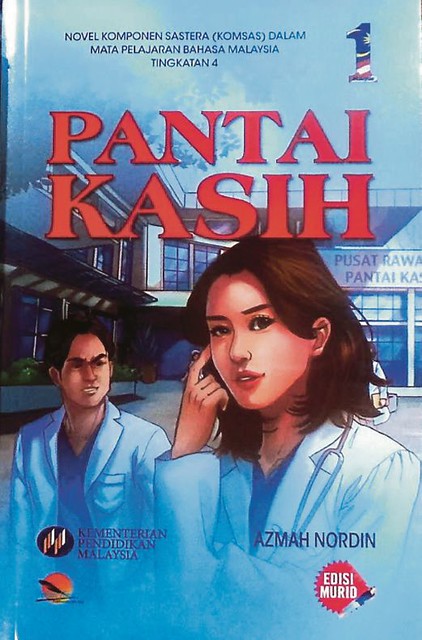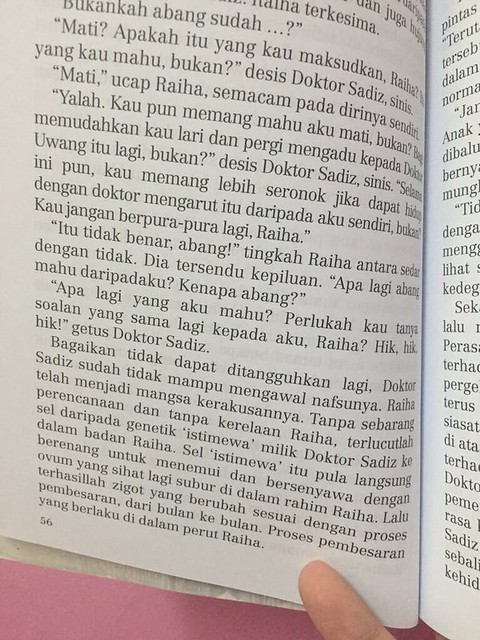"It is there, where they burn books, that eventually they burn people."
Heinrich Heine
Contain some spoilers for the Harry Potter books.
I am reminded of the uproar I lived through over the Harry Potter books back at the height of their popularity. Predictably, due to witchcraft being an integral element of the series, many folks who are antsy around words like "witch", such as fundamentalist Christians (and Muslims), wanted nothing to do with The Boy Who Lived™ and even sought to ban it from school and library for fear that the books would lead children into ungodly practices of magic. I remember back when I was doing my A-level, I had a coursemate whose parents - strict Christians - forbade her to read any Harry Potter books even though they have not even read the books themselves to see if the writings are as detestable as they were led to believe by their pastor. But that's par for the course: people often complain about things they do have not the slightest clue about.
Now, I want to talk about another similarly controversial, though far less famous book that is facing a similar situation in Malaysia,
 |
| The cover art is very reminiscent of the illustrations of school textbooks I used to have. |
What it is? Well, it's a novel called Pantai Kasih (Care Beach or Love Beach) by Azmah Nordin. It is the designated reading material for the literary study component of the subject of Malay language for Form 4 students in Malaysian secondary schools.
What's wrong with it? Basically, many people, from teachers to parents to mullahs clutched their pearls and clucked about how it is an inappropriate novel to expose our 16 year old students to because of its "lewd" content and purported "lack of literary merits". They are clamouring for the Ministry of Education to select a more suitable work to put in its stead.
Now, I have not read the novel in question (and I dare wager, neither did most of its detractors). Yet, most people felt that they have formed sufficiently informed opinions on it after reading a passage from Pantai Kasih which have been widely circulated on social media,
 |
| My eyes! |
The offending bit seems to be that paragraph the finger in the picture is pointing to, and translated to English, it goes something like,
It cannot be held back - Doctor Sadiz was unable to control his lust any longer. Raiha became the victim of his rapacity. Without any design or willingness on Raiha's part, Doktor's Sadiz's genetically 'unique' cells made its way into Raiha's body. Those 'special' cells then swam to meet and united with her healthy, fertile ovum in her womb. A zygote was created and it develops in its process of growth, month to month - a process taking place within Raiha's belly.
I was never particularly proficient in Malay but you get the idea. The passage described a sexual act - a non-consensual one - followed by the act of ejaculation. It then became almost clinical in its very brief birds-and-bees description of how babies form.
Now, all caught up? I confess that that's all I know about the novel in question so far. Even knowing so little, I feel confident in challenging the view that Pantai Kasih is devoid literary saving graces.
Firstly, in my opinion, any book no matter how deplorable or detestable has literary value. I would say that even about Mein Kampf or the Holy Bible. The whole point of literary study is to learn how to engage with literature; how to consume it, interpret it, critique it, and understand its relevance to the greater culture around it.
Yes, there is passage in Pantai Kasih in which a character was raped by another but let's discuss that. Rape, I find, is a recurring motif in Malay romance fiction. Take for example the popular local drama film Ombak Rindu (itself adapted from a novel by Fauziah Ashari): it was billed as a hard-won romance between a man and a woman, but in actuality the male protagonist (Hariz) is a rapist who raped the heroine (Izzah), a pious woman sold into prostitution by her uncle, while she was unconscious. She was then bought and kept as a sex slave by him, and must fulfill his sexual needs whenever he wishes it. She fell in love with him and married him eventually.
Another popular Malay novel-turn-TV show in Malaysia is The Wedding Breaker by Evelyn Rose in which Ariana Rose (the female protagonist) - at the behest of Tengku Juwita - pretended to carry the child of Tengku Adam Kamil (the male love interest) in order to break up his engagement with Tengku Juwita, who did not want to marry Adam. In retaliation, Tengku Adam raped Ariana Rose. The story ended with Tengku Adam apparently reforming after his pilgrimage to Mecca and marrying his rape victim. This too is portrayed as a love story.
Most Malay consumers of such fiction, even women, readily accepts male protagonists who are rapists (evident from the popularity of such works). This ties into the motif of rape in Pantai Kasih too. There is much to discuss on the prevalence of rape culture in Malay communities and what inculcated it. Rape culture is a concept in feminist theory that describes a setting in which rape is pervasive and normalized due to societal attitudes about gender and sexuality. In fact, many religious scholars in Malaysia does not even recognise the concept of marital rape, and the Perak Mufti even said last year that women must submit to the sexual desires of their husbands, even on camel-back. We also see regular news about how rape victims are frequently married off to their rapists as a resolution to such tragedies.
From a literary study perspective, the theme of rape in Pantai Kasih has a lot of sociocultural relevance and how a blurring of lines between rape and love do in fact exist in Malay culture.
Also, it seems that the consumption of such salacious and sexually explicit content is quite common amongst Malaysian readers, in spite of how conservative Malay Muslim culture actually is. Are these works simply a form of acceptable outlet for Malays who are compelled to live in such sexually-repressed lives - lives in which outright pornography and premarital sex are prohibited?
Another thing I noticed about the passage from Pantai Kasih is that the lusty rapist's name is Dr Sadiz, which sounded like a meaningful fictive name. Authors frequently give names to characters which describes said character, or names which hold some hidden significance. One of the most famous examples in contemporary literature is Lord Voldermort, whose name in French means "flight of death" - alluding to the character's commitment to be immortal. Voldemort may have also been inspired by Edgar Allan Poe's M. Valdemar (The Facts in the Case of M. Valdemar), a character who also similarly returned from apparent death. Additionally, Lord Voldemort is an anagram of Tom Marvolo Riddle, his real name. Pretty much every character that J. K. Rowling created has a meaningful name.
Dr Sadiz calls to mind the Malay word "sadis" - a loan-concept drawn directly from the English word "sadist" (someone who enjoys inflicting pain on others, sometimes in a sexual sense). The word sadist itself has its etymological root in the name Marquis de Sade, a French aristocrat famous for mistreating women in cruel, unusual and sexual ways.
See? Even Pantai Kasih can provide very relevant and compelling literary lessons in the hands of someone who knows how to approach literature. And that's how you deal with books - you analyse them, not ban them. Sanctimonious puritanical teachers, parents and religious authorities take note.
P.S. Luckily, it seemed like the Ministry of Education is sticking to their guns and is keeping the book in schools.
A rapacious devourer of books,
k0k s3n w4i

No comments:
Post a Comment